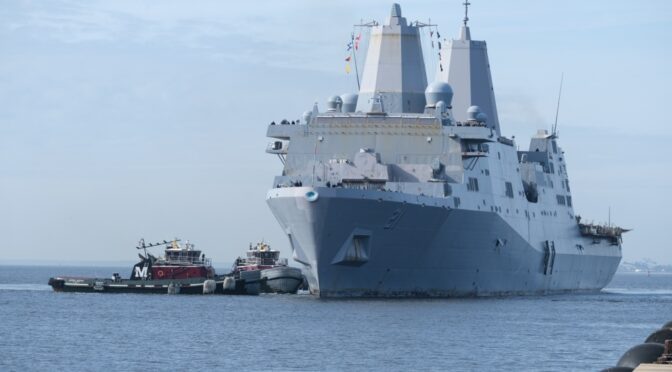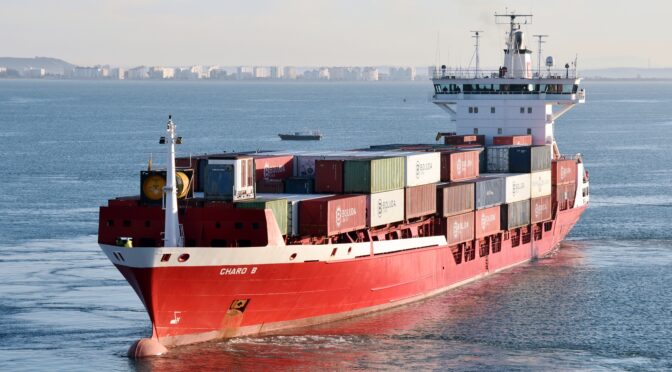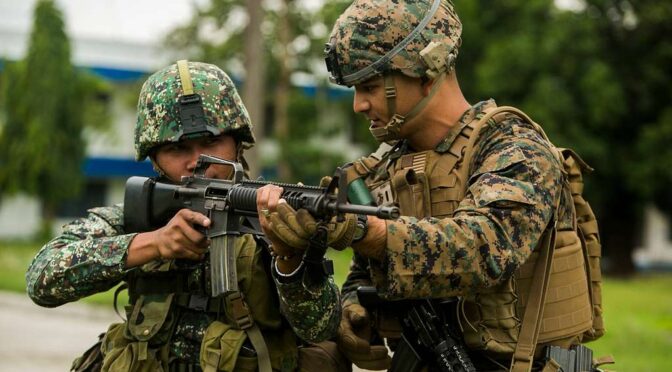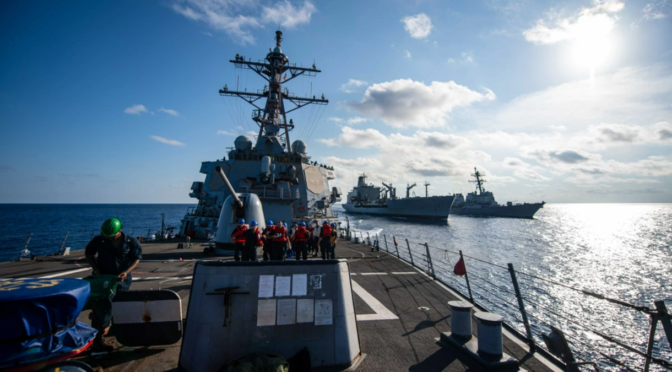Notes to the New Administration Week
By Chris Huff
The AUKUS security agreement between Australia, the United Kingdom, and the United States represents a bold and necessary initiative to counter evolving threats to U.S. security. This agreement strengthens international alliances by expanding the presence of advanced, conventionally armed, nuclear-powered submarines and improving the U.S. naval submarine industrial base. While a strategic success with long-term benefits, AUKUS has introduced challenges due to increased costs, resource competition, and extended production timelines for Virginia– and Columbia-class submarines. These issues have adversely affected the Navy’s amphibious fleet, undermining the Marine Corps’ ability to maintain readiness and execute its vital global responsibilities.
Pillar I of the AUKUS agreement requires the annual production of one Columbia-class submarine and two Virginia-class submarines, known as the 1+2 workload. This demand has significantly strained the submarine industrial base, exacerbated by a redesign of the Virginia-class submarine that increased production costs. According to the Congressional Research Service, future production timelines for both submarine classes are expected to be longer than initially projected. In response, Congress has allocated additional funding to strengthen the industrial base, demonstrating a strong commitment to defense collaboration with allied nations. This funding aims to meet the increased demand for nuclear-powered submarines, a key element of AUKUS.
However, these efforts have inadvertently impacted amphibious ship readiness, jeopardizing the Marine Corps’ ability to provide critical mobility and deploy as a lethal, rapid-response force. Since the enactment of AUKUS, multiple Marine Expeditionary Unit deployments have been delayed, creating operational gaps and reducing the forward presence of Marine forces. These delays are largely due to the prolonged maintenance required to repair amphibious ships, which have suffered years of neglect while supporting continuous deployments during the War on Terror. The costs of these repairs have steadily increased, and competition for financial resources within the Navy remains intense.
Meanwhile, commitments to allied nations have prioritized the Virginia-class submarine, diverting and ensuring resources necessary for its construction are available. The Virginia-class program has experienced significant cost overruns, amounting to $967 million under the 2024 budget request and $4.644 billion under the 2025 request through 2028, reflecting a staggering 385 percent year-over-year increase. The Congressional Budget Office also included $3.48 billion in the administration’s 2025 request for an anomaly in the fiscal year 2025 continuing resolution specific to Virginia-class production. To address these financial shortfalls, the Navy has reallocated funds within its budget to meet the requirements of its highest-priority vessels, including at the expense of the amphibious fleet. Projections from the Congressional Budget Office indicate that cost overruns for the Virginia class submarine will increase by an additional $849 million through 2029.
The focus on high-priority submarines and the resulting reallocation of funds have severely impacted the readiness of the amphibious fleet. The maintenance backlog and diminished funding for amphibious ships pose significant risks to strategic deterrence and limit the Marine Corps’ ability to respond to global crises. These challenges underscore the urgent need for increased funding to sustain current readiness and support the future acquisition of amphibious ships.
The Government Accountability Office stated in a December 2024 report to the House Committee on Armed Services that the Navy is likely to face difficulties meeting the statutory requirements to have at least 31 amphibious ships in the future given the age of many ships and other factors. Additional funding in the fiscal years 2026 and 2027 National Defense Authorization Acts, beyond the existing budget, is essential to address these challenges.
The increased funding would facilitate the procurement of new amphibious ships and expand industrial capacity for maintaining existing amphibious vessels, including service life extension requirements. The president’s endorsement of the Navy’s 381-ship goal is an important step that could formalize this target into policy, aligning with the requirements outlined in 10 U.S.C. 8062(b). Such support would enable the acquisition of additional amphibious ships and sustainment of the fleet, ensuring the Marine Corps can provide persistent global deterrence and remain ready to execute any mission.
Prioritizing funding to enhance current amphibious ship readiness is critical. Strengthening these capabilities ensures the Marine Corps can fulfill its role as the nation’s expeditionary force, prepared to deter aggression, respond to crises, and execute strategic objectives. By balancing the demands of AUKUS with the needs of the amphibious fleet, the United States can maintain a versatile and resilient naval force capable of meeting today’s challenges and tomorrow’s uncertainties.
Chris “Rocket” Huff is a Major in the United States Marine Corps.
The views presented are those of the author and do not necessarily reflect the official views or positions of the U.S. Marine Corps, U.S. Navy, and the Department of Defense.
Featured Image: NORFOLK, Va. The San Antonio-class amphibious transport dock USS New York (LPD 21) arrived at Naval Station Norfolk, Nov. 22, 2020. (U.S. Navy photo)




